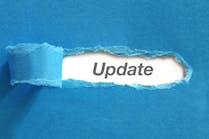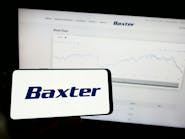2024 Supply Chain Department of the Year: University of Utah Health
As they are every year, the nominations for Healthcare Purchasing News’ (HPN) Supply Chain Department of the Year were outstanding. Unfortunately, there can be only one department profiled. This year, we’ve chosen University of Utah Health (U of U Health).
The team is responsible for oversight for a network of five hospitals specializing in orthopedic, rehabilitation, cancer treatment, neuroscience, and general healthcare, alongside twelve community health centers. This team manages the task of receiving and distribution of medical equipment and commodities as well as intake of food, pharmaceuticals, building materials, and other goods essential for hospital and clinic operations. The team also supports receiving and delivery for multiple academic and research health partners across the University of Utah campus. The team handles fleet management and courier services for the above listed entities spanning the entire Salt Lake valley and a few locations beyond. Integral to their operations is the management of an automated inventory management system covering 192 distinct stocking locations and ensuring proper medical supplies are ordered and supplied to clinicians who need them, when they need them. This team also oversees the maintenance, cleaning, and re-distribution of essential small patient care equipment between nursing units. This service covers small equipment such as IV and epidural pumps, sequential compression devices, crash cart and other specialty cart replenishments, and some custom kit creation for patient care.
Some key highlights from the team’s submission include:
· Non-Personnel Reduction: Through strategic sourcing, negotiating a contract in collaboration with their supply chain peers with a key strategic partner, they achieved a significant reduction in annual supply costs.
· Personnel Expense Optimization: By automating repetitive tasks and optimizing product intake with Medline, they decreased overtime expenses by 35% and increased productivity by 20% for the swing shift.
· Error Reduction and Improved Accountability: Implementing barcode scanning technology into their product intake processes reduced oversight of inventory shipment incongruencies by 50% with their former distribution partner, leading to cost savings of an estimated $500K annually.
· Supplier Collaboration and Optimized Inventory Management: The department has developed a strategic partnership with Medline, resulting in joint cost-saving initiatives and improved supply chain resilience. Data-driven strategies and collaboration have reduced their killed fulfillment rate by 40%
HPN had the pleasure of speaking with Mark A Fawson, MBA, BSN, RN, CMRP, director, Material Services about his submission and team. He broke down a few key components of his team’s initiatives and spoke with us about his leadership methodology.
Process innovation
The department has implemented several innovative approaches to streamline operations and improve efficiency. One project that particularly demonstrates process is their PAR Tracking.
The team created a program to supplement our inventory management system. PAR Tracking, as it has been dubbed, was formed using Google Sheets. The program intakes historic usage and ordering data, then computes it in a defined algorithm with parameters we established, to provide an item par level modification report, a zero hits report, a frequent restock report, and other helpful graphs and information. This system has reduced inventory stock outs by 88% and reduced restocking nursing unit par rooms from our storeroom inventory by 80%.
Additionally, the team used Lean Six Sigma methodologies and conducted process improvement that now allows for 72–96-hour supply of goods in stocking bins, rather than 24-48 hours previously. This system also decreased the overall daily ordered lines by 33% which means that products are touched less frequently, even though they are receiving a similar volume of goods overall.
As an unexpected result from this project, other team members began making improvements of their own. The team was initially focused on low hanging fruit and PAR levels that they could modify without changing bin sizes in stocking locations. When team members saw the benefits of what we were doing, they began moving items in our storeroom to find better placement for efficiency of our operations overall. They also began better cleaning and maintaining our supply rooms in general, because they had more time to focus on value-added work.
Customer service
The department has been managing the diverse needs of its internal customers, ensuring high levels of satisfaction and quality service through its Health Unit Coordinator (HUC) Tool.
The introduction of the HUC Tool significantly improved the accessibility and efficiency of ordering medical supplies for clinical staff. By allowing hospital staff to search for items using product Lawson numbers, common name, descriptions, and manufacturer catalog/reference numbers, along with viewing a photo of the items, the tool has reduced the need for frequent phone calls and streamlined the ordering process.
The HUC Tool has facilitated easier training and onboarding for new staff. It has made it simpler for new hires to familiarize themselves with the storeroom inventory, reducing the learning curve and improving overall staff productivity.
By addressing the difficulties faced by HUCs and other hospital staff in finding and ordering supplies, the HUC Tool has strengthened customer relationships. The positive feedback and increased ease of use have demonstrated commitment to supporting hospital staff, enhancing their workflow, and improving overall satisfaction.
The flagship hospital distribution storeroom is open 24/7 and 365 days a year. The storeroom team regularly received phone calls from clinicians asking for product information so they could transmit an order to the storeroom for fulfillment. Distribution staff members don’t typically have a medical background, and so common terms for a clinician sometimes are not understood, leading to confusion on both sides. Having 1,457 unique items in our storeroom adds to the challenge. This year, the department wanted to tackle the problem by making a tool where a HUC, nurse, or other clinician could type a product number, item description, common name, or manufacturer catalog/reference number into a search tool to determine if that item was carried in our storeroom and have the information needed to transmit an order.
The basis for this tool came from the department’s Storeroom Dashboard project that was created in 2021. It was developed after observing similar difficulties within their own team when searching for products in the storeroom. This was especially true for new hires. The difficulty came from limitations in the two systems. One system was a search that could only be done using manufacturer catalog numbers or their own Lawson item numbers. The other system was a printed spreadsheet in a book that had the location in the storeroom. Without the item number first, the second tool was useless. The department concluded that it would build a system of their own, whereby material services staff could identify more readily products in question and know their location quickly within the storeroom. From this, the Storeroom Dashboard was born.
This year, after noticing that hospital staff were having a hard time ordering items, the team began asking questions to identify just what those challenges were. The standout was that HUCs were having difficulty finding item information for the exact product(s) the clinician was requesting, thus, making it difficult for them to order it from the storeroom. The team realized they already had developed something similar to their own and hearing the suggestion of one of our material services staff members to add photos, they set out to create a tool for others to use. The “HUC Tool” was created as a simplified version of the formerly created Storeroom Dashboard. This HUC Tool had much of the same functionality as the Dashboard, since it had mostly the same information, but with certain things removed that others wouldn’t need to know.
Once created, the team began sending it out to some of the HUCs they interacted with regularly. They showed them how to use it and expected it just to spread naturally. At first, there were few searches but spreading the word about the HUC Tool paid off. Soon, a staff member from Professional Nursing Development reached out indicating she had seen the HUC Tool and asked if they would be willing to showcase it in a clinical staff education meeting. After the tool was presented at this meeting, there was a dramatic increase in the number of users for the HUC Tool and our team began hearing from HUCs and hospital staff that they could now find items much easier than they ever could before. It made training easier with new staff since they could search for the items to find what they needed.
Comprehensive strategic planning
This year, U of U Health’s department’s strategic planning efforts ensured seamless collaboration with partners across the supply chain continuum.
U of U Health staff effectively coordinate with a diverse range of partners across the supply chain, including raw material suppliers, manufacturers, distributors, group purchasing organizations, and service companies, to foster improved communication and joint efforts with provider groups/IDNs, and student groups to share best practices, career development, and learning opportunities
By engaging supply chain executives from various Integrated Delivery Networks (IDNs) and increasing board membership, U of U Health staff facilitate a more vibrant and strategic approach to meetings and events, ensuring a comprehensive and inclusive planning process.
Through organizing impactful events like the Rocky Mountain Chapter of the Association for Healthcare Resources and Materials Management (RMAHRMM) learning sessions, networking events, service activities, and vendor fairs, UUH staff provide valuable educational content and foster strong professional connections, enhancing overall supply chain efficiency for the benefit of patients.
The current supply chain landscape
When asked about what the biggest challenges supply chain leaders and departments are facing today, Fawson said, “Backorders and other shortages of goods through manufacturing disruptions. This can be due to a variety of factors; political instability exacerbating challenges of moving goods, natural disasters causing raw material shortages, operating too lean, mergers and acquisitions that lead to less options. You name it, backorders and product shortages are a major problem.”
Additionally, he added, “Cybersecurity and ensuring digital information shared for operations is not vulnerable. Tighter security measures slows implementation of new information technology to ensure sensitive information is protected.”
And finally, “Physician preference variability within institutional teams. Some practice groups are more collaborative and able to standardize their product selections,” Fawson noted. “This drives down cost due to that standardization and purchasing in economies of scale. Other groups may have higher provider turnover, departmental growth that adds additional providers and voices to the mix, or stronger and more variable opinions within their group(s) leading to difficulty standardizing on fewer options.”
He also commented, “I’ve observed an informational gap with clinicians on understanding factors that should be considered when they want a new widget. One of the biggest is simply a lack of reimbursement knowledge when compared to the need to cover operational expenses. When we educate providers on these business details, they often marry that to the clinical decisions they have to make, and usually come to the best conclusions on their own. It is beautiful to behold when patient outcomes, quality of care, and financial viability are all in alignment. This is best achieved when multidisciplinary, interdepartmental collaboration takes place and broader understanding is achieved.”
Teamwork makes the dream work
When questioned about how Fawson runs his team, he said, “There are a few things I feel I do well. It starts with hiring well and surrounding myself with people smarter than me. I only want the best on our team, people that self-manage, people that are good thinkers and bring value, and people that know where they are going in life. To hire the best, we needed to slow the interview process and dive deep into candidates. We recognized that it could be painful for other staff if we took our time filling vacant positions, so to bridge that gap and keep our team members from burning out, we added PRN (as needed) staff to our team. These PRN staff members help us maintain a homeostatic staffing matrix by covering PTO, FMLA, or vacancies. This has really helped us be methodical in our hiring and add the best and brightest to our team. Most of our PRN staff are students in business operations or healthcare management programs at various universities in the valley. For them it is a foot in the door to test what they are learning, gives them flexibility in a work schedule, and exposes them to one of the hidden secrets of healthcare, supply chain management. We often benefit from their inquisitive, ambitious minds.”
“I am really open and honest with new hires about the big picture, overall goals we want to accomplish, and setting clear expectations upfront,” he added. “By doing this, they know where the bar is and we avoid ambiguity. They know how to be successful and the four managers on my team are very adroit at carrying on this vision with them.”
Fawson stated, “I ask the team to challenge the status quo and continually consider why we are doing something a particular way. Asking them to simply challenge the status quo isn’t enough. The key was providing them with a platform to voice what we call ‘rocks in their shoes.’ The team members volunteer as project leaders to tackle these ‘rock’ issues. This ownership and leader mentality gives them satisfaction as they develop critical thinking skills and broaden their internal network of contacts as they often collaborate on solutions with other departments. The underlying objectives I had in mind when implementing this process with the team were two-fold: tap into their intelligence, and develop their skill sets to prepare them for future career growth. Really, I get a lot of satisfaction out of the fact that I’ve trained people who have gone on to become C-suite executives, physicians, nurses, consultants, and other leaders.”
Finally, Fawson said, “As a former bedside care nurse, I make every attempt to help my team connect with purpose. They understand that the work they do is not simply rote ordering and stocking of products. They understand that they play a critical role in quality patient care and literally save lives by getting the right product to the right place at the right time. They understand that they support and affect the working environment of every department within our hospitals and clinics, and even some departments within our academic arm. They are proud to make such a large impact with the expanse of their reach. We have recently worked on projects in collaboration with design and construction, nursing education, environmental services, facility management, nursing leadership, security, operating room teams, information technology, administration and others.”

Janette Wider | Editor-in-Chief
Janette Wider is Editor-in-Chief for Healthcare Purchasing News.





